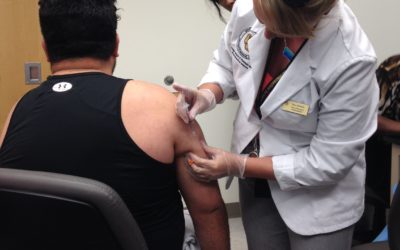If you have certain health conditions, your healthcare provider may advise you to follow a fluid restricted diet. Examples of health conditions that may benefit from fluid restriction include heart failure, kidney disease, and liver disease. Sometimes these conditions may lead to an accumulation of fluid in your body, which in turn can cause symptoms like shortness of breath or trouble breathing, weight gain, and swelling. A fluid restricted diet may help because it limits the amount of fluid you take in, which helps lower the amount of fluid in your body.
What is a fluid restricted diet?
Fluid restricted diets are what they sound like, a way of eating that limits the amount of fluid you take in per day. Fluid restricted diets should only be done under the advice of a healthcare professional. Your provider, or a dietician, can help you determine the optimal daily fluid intake for you based on your body and health problems. Before starting, it may be helpful for you to keep a log of how much you are drinking throughout the day and how much urine you pass. This would help tell your provider how your body is handling fluid and how much it gets rid of.
How do you maintain a fluid restricted diet?
You will need to track and divide your fluid intake for the day after your provider tells you your total fluid intake for the day. It will help to pour drinks into small cups to limit how much you’re drinking. If you feel thirsty, drinking a cold drink rather than hot drinks can help quench your thirst better. Not only will it be important to keep the liquids you drink under the limit of the fluid restricted diet, but you may have to consider the foods you eat too as part of your daily fluid intake. For instance, watery fruits like watermelon, grapes, and grapefruit, soups, sauces, gravies, ice cream, milkshakes, etc. Flavored water and sport/energy drinks are also a source of liquids. Beer, wine, and mixed drinks (alcohol) should be avoided. A dietician or doctor can help you get a good idea of any foods you will need to avoid. It may also help to avoid foods with lots of salt, because this can make you feel thirsty. Use other herbs for seasoning your foods, like pepper, garlic, and herbs.
When following a fluid restricted diet, it will help to divide out the liquids you are allowed throughout the day. Be sure to take your medications when you have your allowed liquids and make sure you’ve allotted liquids for drinking with your meals and snacks. Using a water bottle with markings for volume will help you keep track of your fluid intake. A few more helpful tips include draining fluids from canned or cooked fruits and vegetables before eating, reading food labels and looking for low salt, low sodium, unsalted, or no salt added products, planning meals ahead, and tracking foods you eat.
It may be difficult at times but restricting fluids can really help when medically necessary. Because it always helps to know why you’re doing something, make sure you understand why you’re being asked to restrict your fluid intake. If you have more questions about your fluid restricted diet, you should consult with your healthcare provider or try to meet with a dietician.
Resources:












